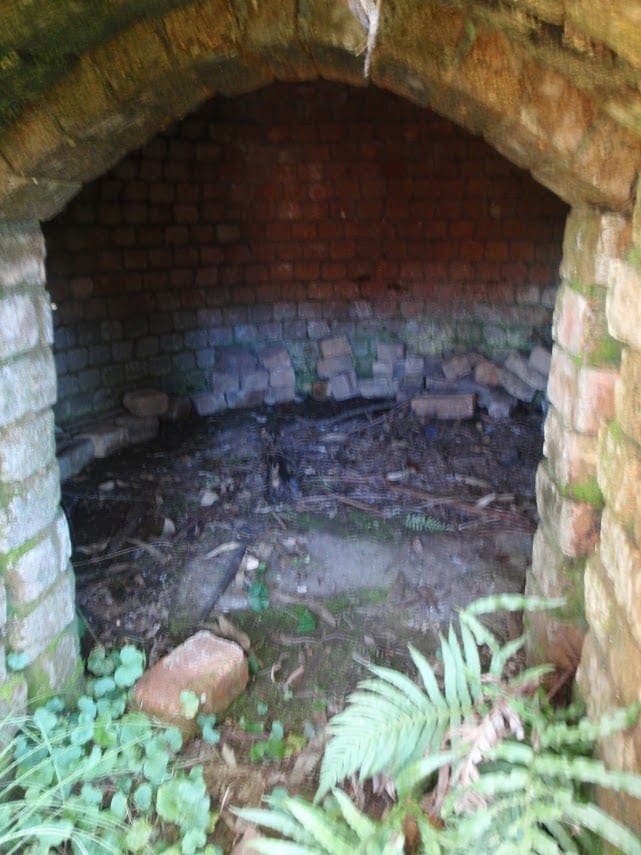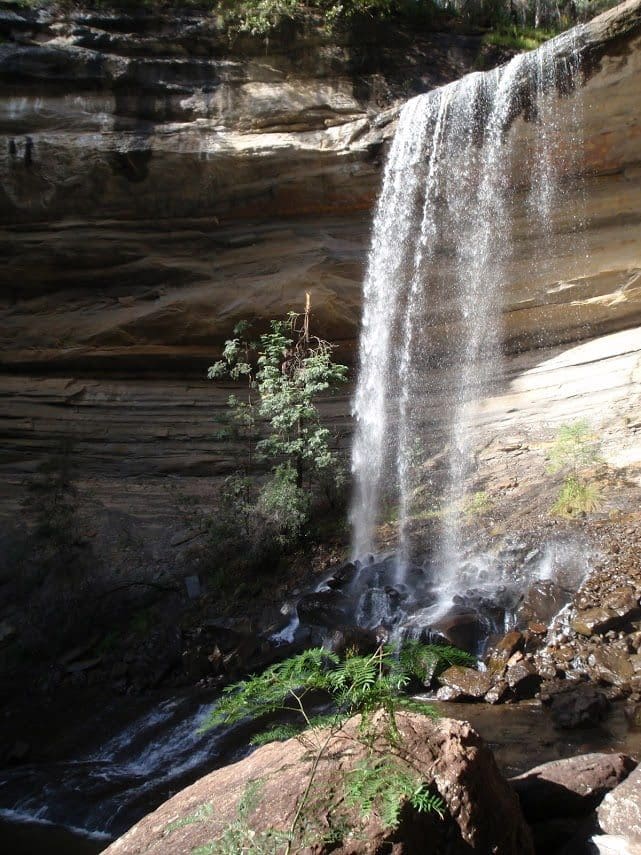Hike at a Glance
Max elevation: 1075m
Min elevation: 853m
Total Ascent: 336m
Important info
Many of the walks in this area require rock scrambling and abseiling skills. You should be certain of your capabilities, and always walk in a group.
Hike overview
Enjoy a rewarding challenge with the Deep Pass Circuit, a 14km loop trail through Newnes State Forest and Wollemi National Park. This route, starting and ending on Glow Worm Tunnel Road, offers a taste of both landscapes and avoids some sections of the more demanding Deep Pass Canyon Walk.
Prepare for a full day of adventure (approximately 6 hours) or extend your exploration into an overnight adventure by booking a spot at the Deep Pass walk-in campsite (remember, tent camping only!).
Along the way, marvel at natural wonders like Split Rock, a massive sandstone formation cleaved in two. Follow Nayook Creek, a waterway teeming with native flora, and enjoy the refreshing escape offered by the canyon sections. The Deep Pass Circuit promises a scenic adventure for experienced hikers seeking a challenge that's a step below the full 17km Deep Pass Trail.
Deep Pass walk-in campsite
Set up camp at remote Deep Pass campground in World Heritage-listed Wollemi National Park. With unmarked sites suitable for tents only, this walk-in campground is near scenic walks, rockpools and canyons.
Gallery
Got some great shots from this hike? Upload your photos here to inspire others and show off the beauty of the trail!
Click to view form >>
Submitting your photos doesn’t mean you lose ownership. You can be credited for your contributions, and you can request removal at any time.
Content use
Please don’t copy GPX files or content from this site to AllTrails or other platforms. Each trail has been personally mapped, documented, and refined to support Australia’s bushwalking and hiking community. While some details come from land managers, every listing reflects significant personal effort. This is a free, community-driven initiative—your respect helps keep it that way.
Walk map and GPX file
Max elevation: 1075 m
Min elevation: 853 m
Total climbing: 336 m
Total descent: -344 m
Getting there
Getting to the trailhead: Wollemi National Park.
Closest towns to this walk: Bells Line of Road, Bilpin, Broke, Bulga, Bylong, Capertee, Cessnock, Colo, Colo Heights, Denman, Kandos, Kurrajong, Kurrajong Heights, Lithgow, Mount Tomah, Mount Wilson, Putty, Rylstone, Sandy Hollow, Singleton
About the region
Deep Pass, a saddle located on the western end of Railmotor Ridge near Mount Norris, beckons exploration. Accessible via Glowworm Tunnel Road, Eastern Boundary Road, and the Deep Pass Trail, this historical landmark was designated a Rural Place in 1997. You can even spot it on the 1882 map of the Parish of Rock Hill. A small creek named Deep Pass Creek, stemming from the south side of the saddle, flows for 2.1km before meeting Dingo Creek.
Just a few hours northwest of Sydney lies Wollemi National Park, a World Heritage site that will leave you breathless. Immerse yourself in the vast Wollemi Wilderness, the largest declared Wilderness Area in New South Wales. Towering cliffs, wild rivers, canyons, and serene forests provide endless opportunities for scenic walks, drives, wildlife spotting, canoeing, and camping.
Wollemi National Park offers diverse experiences across different regions. Near Windsor, discover the beauty of the Colo River and its gorges, perfect for hiking, picnics, riverside camping, and canoeing. Explore historic mining ruins and the magical Glow Worm Tunnel near Newnes campground in the Wolgan Valley. Hike or rock climb the magnificent escarpments that rise from the valley floor.
Seeking tranquility? Escape to Gunguddy (Dunns Swamp) in the Mudgee Region. Here, you can camp, swim, and canoe while marveling at the remarkable pagoda rock formations on easy walking tracks. The park's northeast region, bordering the Upper Hunter Valley, is best explored on a scenic drive or 4WD adventure. Discover remote camping options near Sheepskin Hut and historical remnants from the area's mining and pastoral past.
Whether you're seeking a challenging hike through Deep Pass or a relaxing escape within a specific region of Wollemi National Park, there's something for everyone. Remember to check park regulations and plan your trip accordingly. T
Similar walks nearby
Looking for more walks in or near Wollemi National Park? Try these trails with a similar difficulty grade.
Track grade
Grade 4 (Hard) - Challenging Walks for Experienced Walkers: Grade 4 on the AWTGS signifies challenging walking tracks. Bushwalking experience is recommended for these tracks, which may be long, rough, and very steep. Directional signage may be limited, requiring a good sense of navigation. These walks are suited for experienced walkers who are comfortable with steeper inclines, rougher terrain, and potentially longer distances.
Explore safe
Plan ahead and hike safely! Carry enough water, pack layers for changing conditions, and bring safety gear like a torch, PLB, and reliable communication device. Check official sources for trail updates, closures, and access requirements, and review local weather and bushfire advice. Most importantly, share your plans with someone before you go. Being prepared makes for a safer and more enjoyable hike! Stay Safe, Explore More, and Always #ExploreSafe.
Packing checklists
What you carry in your pack depends on factors like weather, terrain, and your adventure type. Not sure what to bring? My free planning, food, and packing checklists are a great starting point, covering day hikes, overnight trips, and multi-day adventures. Use them to customise your kit and always prioritise safety.
Let someone know
Before heading out, take a moment to fill out your trip intentions form. It’s a quick way to share your hike details with family or friends. If something goes wrong, they can notify emergency services, ensuring a faster response and peace of mind. Stay safe and enjoy your adventure
Suggest an edit
Spotted a change on this trail? Maybe there are new features, the route has shifted, or the trail is permanently closed. Whatever the update, I’d love your input. Your feedback helps fellow hikers stay informed and ensures that our trail info stays fresh and reliable.
Acknowledgement of Country
Trail Hiking Australia acknowledges the Traditional Owners of the lands on which we hike and pay respects to their Elders, past and present, and we acknowledge the First Nations people of other communities who may be here today.






